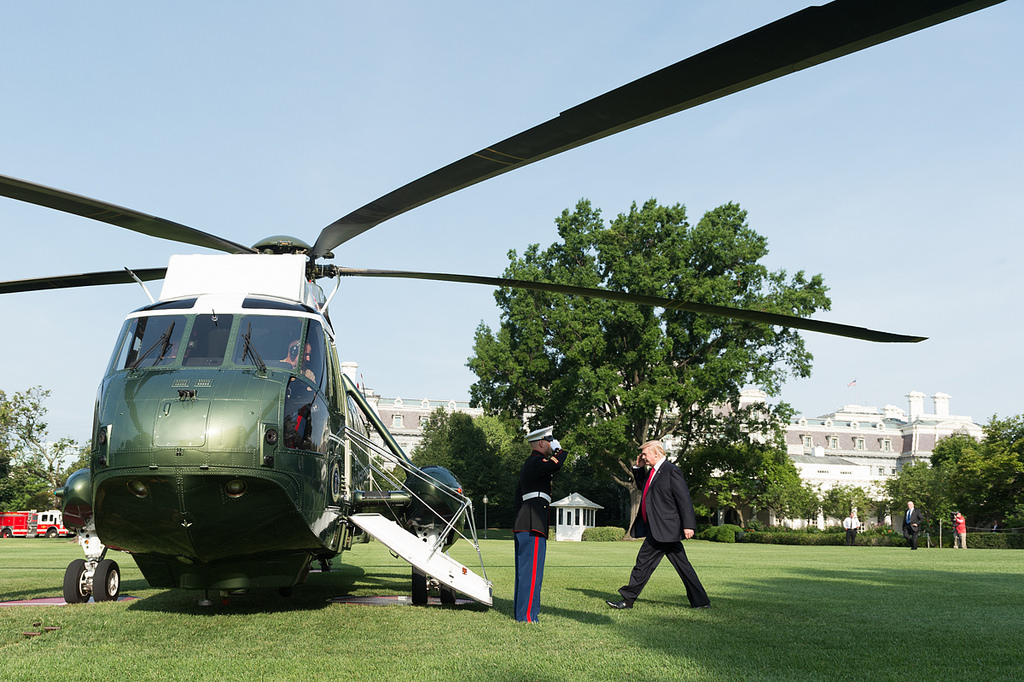Guest post by Lionel Beehner

One puzzle about the conflict in Syria: as the fighting grows more violent and death toll climbs above 80,000, among Americans support for a limited military intervention has fallen. Last summer, nearly two out of three Americans supported a no-fly zone in Syria, according to a poll by the Chicago Council on Global Affairs. Recent polls (CBS, Reuters, Gallup), however, show that most Americans oppose any kind of military intervention (assuming there is no proof of chemical weapons use).
The sad reality is that the uglier a civil conflict gets, the less likely Americans will want to intervene to stop it.
Americans are generally wary of intervening militarily to save lives. Call it the “post-Vietnam syndrome.” Sure, they are occasionally supportive of sending humanitarian aid or engaging in missions with multilateral backing. But in Bosnia, for example, before the 1995 Dayton Accords were signed most Americans thought the United States had “done enough” and saw intervention as Europe’s responsibility. Moreover, less than half of Americans supported the 2011 NATO no-fly zone in Libya. Barely 50% backed NATO’s bombing of Belgrade in 1999. Interventions to oust dictators or respond to military coups are equally unpopular among Americans. The 1994 intervention in Haiti to reinstate President Aristide after his 1991 ouster in a coup, for example, had barely half of America behind it. Ditto the 1983 invasion of Grenada.
Americans are only slightly more supportive of interventions that have a tit-for-tat casus belli. The 1986 US attack against Libya, for example, or 1998 air strikes against Afghanistan and Sudan in response to attacks against our embassies in Kenya garnered 71% and 66% support, respectively.
Contrast that with the 90% support for the 2001 invasion of Afghanistan, and 76% support for the 2003 Iraq War.
Paradoxically, the interventions with the greatest public support in recent memory were full-blown ground invasions, not limited interventions for humanitarian purposes, even though the latter poses less risk to American lives. There is, moreover, little correlation between American public support for an intervention and whether the operation actually succeeds or not. The wars in Afghanistan and Iraq were hardly military successes, even though they enjoyed high levels of initial public support. The First Gulf War, meanwhile, which was successful at repelling Saddam from Kuwait, only enjoyed tepid support at best (37% in favor of military action, inching up to 53% after the November 1990 UN resolution to use “all means necessary”).
After several months of punitive air strikes, the NATO interventions in Kosovo and Libya resulted in the eventual ousting of two dictators, Slobodan Milosevic and Muammar Qaddafi, respectively. The aftermaths of both interventions were not pretty, but their stated aims – to prevent a humanitarian catastrophe – were largely met. While the military objectives of humanitarian interventions are obviously more limited than those of full-scale invasions, by and large our track record of intervening for humanitarian purposes is better than our record for going in for other (less noble) reasons.
Another factor that makes US intervention even less likely: The public tends to show stronger support for interventions led by Republican administrations. Democrats typically intervene under less clear mandates for reasons not always directly linked to protecting US strategic interests. That is not to say that they intervene for idealist reasons while Republicans only intervene when US national security is at stake – after all, Bush Sr. intervened in Northern Iraq in 1991 to protect Kurdish refugees and the following year intervened in Somalia to save innocent lives. Obama, meanwhile, is the one who violated Pakistani sovereignty to take out Bin Laden (By the way, Americans remain very supportive of targeted killings by pilotless aircraft. The use of drones in Yemeni, Somali and Pakistani territory, despite their dubiousness under international law, enjoys 83% approval ratings, according to a February 2013 Washington Post/ABC poll).
In short, the American public remains a poor handicapper of how interventions will turn out – what’s popular isn’t necessarily what’s smart or doable. Aside from drone strikes, the bigger or riskier the intervention, it would seem, the higher the level of public support. Perhaps there is a rally-around-the-flag effect. Or perhaps we only select into interventions with ground forces when our most vital interests are at stake.
This effect brings us back to Syria. If an intervention there was sold as an effort to protect US strategic interests in the region – to weaken Iran and its Shiite proxies, perhaps – and not as a mission to prevent Muslims from slaughtering other Muslims, more Americans would probably rally around the cause.
Lionel Beehner is a fellow with the Truman National Security Project, a doctoral student at Yale University, and a term member at the Council on Foreign Relations, where he is a former senior writer.
Correction: This piece originally stated that the 1994 US intervention in Haiti was intended to remove President Jean-Bertrand Aristide, not Haiti’s military regime. Click here to view the corrected sentence.








5 comments
The US intervened in Haiti in 1994 to put Aristide, the elected president, back in office after he had been overthrown by a coup.
@Scott
Thank you for noting the error. We’ve corrected the piece.
Good answer back in return of this question with solid arguments
and telling all on the topic of that.